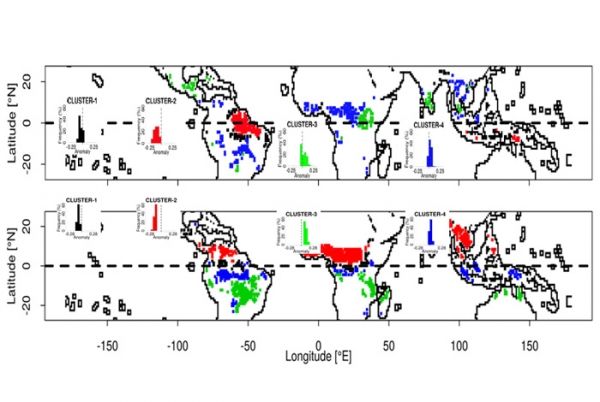New research has found that El Niño events are often associated with droughts in some of the world’s more vulnerable tropical regions. Associated with warmer than average ocean temperatures in the eastern Pacific, El Niños can in turn influence global weather patterns and tropical precipitation, and these changes can lead to massive plant die-offs if other extreme factors are also at play.
“We know a lot about El Niño in terms of its impact on weather and surface water resources,” said Kurt Solander, a research hydrologist in the Computational Earth Science group at Los Alamos National Laboratory and lead author of the paper. “This new study drills down to reveal how El Niño can affect the moisture content of soil, which controls the growth of plants, the food we eat, and how much water from land gets fed back into the atmosphere through evaporation.”
In the paper, Solander and Los Alamos colleagues Brent Newman and Chonggang Xu analyzed changes in soil moisture content in the humid tropics after three “Super El Niño” events from the past—1982-83, 1997-98, and 2015-16. They found that during these years the most severe and consistent decreases in soil moisture occurred in regions like the Amazon basin and maritime Southeast Asia, with some of the changes potentially being significant enough to become a factor responsible for large-scale plant die off. In contrast, some other tropical areas, such as tropical East Africa, will likely see an increase in soil moisture during major El Niño events.
Continue reading at Los Alamos National Laboratory
Image via Los Alamos National Laboratory


